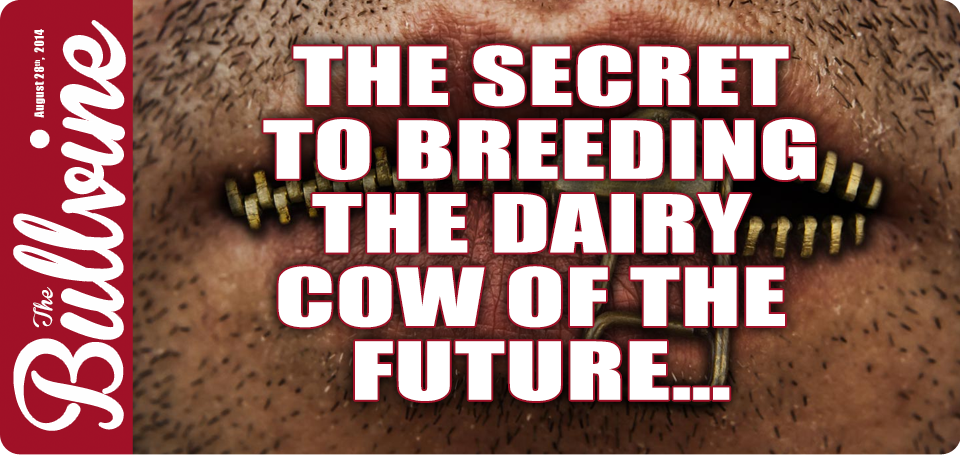As breeders we seldom give thought to the new milk products that consumers will want in the future. We assume that the composition of the milk we ship will not be different from what our cows currently produce. So we continue to select for the proportions of fats and proteins that have existed, wellalmost, forever. But our assumption of no composition change may not be correct. Let’s dig deeper.
Value Added Is the New Game
Some breeders have not been willing to accept the generic approach and average price for the milk they ship. To that end we see A2 milk taking market share in some countries, butter making a comeback (Read more: 12 Things You Need to Know About A2 Milk) and breed specific milks also catching market share. All in an effort to generate more revenue. It takes effort but the rewards appear to be well worth it.
The growth in milk’s market share of the food dollar will come from new specialty, health or pleasing to the palate products. Cold fluid milk in not currently the drink of choice in countries where the population growth will occur and it cannot be priced above other beverages.
To get new value added products will take something other than the milk our cows have been producing. This has been talked about for some time but until genomics came on the scene it had only been talk, as we had no way of linking genetics to products. (Read more: The Dairy Industry – Past, Present and the Future, “Got Milk” is becoming “Got More” and MILK MARKETING: How “Got Milk?” BECAME “Got Lost”)
Takes Shareholder Collaboration
For the vast majority of milk produced, the customers next in line for the milk producers sell, are the processors. So to garner the maximum farm gate price, breeders will need to supply their processor with the milk that can be used to yield the value added product. But it’s not a simple thing.
Changing Milk Composition – Possible or Impossible?
What we are talking about is genetically changing for instance the protein composition of the milk cows produce. It is possible to feed cows a special diet or grow feeds on a certain soil type and relatively quickly alter composition to produce a specific product. It takes time to identify the desired parents, select for and then produce the cows that will produce the milk with unique composition.
A study currently underway in Scandinavia is collecting genomic data on individual cows and three breeds for the proportions of casein and whey proteins they produce. The Jerseys have higher concentrations of kappa casein known to be favourable for cheese making. The Swedish Red have a higher concentration of genes not as favourable to cheese making and the Holsteins have the highest relative composition of beta casein. However, within each breed, there are cows that have the ‘good’ genetic make-up, favorable for increased cheese production. The next steps of the study will be to actually quantify relationships and, once the results are available, refine selection for increased cheese production. The good news is that producers wishing to receive increased returns for the milk they sell for cheese, will be able to develop herds that allow them to do that.
Can Breeders Get Started Now?
At present the tools to identify animals with the ‘good’ genes are not available. However that should not stop breeders wishing to develop bloodlines that will give them more cheese. Selecting for protein yield or CM$ (Cheese Merit Dollars) are good starting points. Instead of using NM$ (Net Merit Dollars) or FM$ (Fluid Merit Dollars) for sire or dam selection, breeders should use CM$. To maximize on-farm profit, selecting for CM$ is superior to using single trait selection and selecting for protein yield only. As more information relating genomic profiles with cheese production becomes available, breeders will be able to fine tune their selection.
Sires that Stand Out
At the present time genomic and daughter proven sires that stand out for CM$ include the following:
- Mr Mogul Delta 1427 (203HO01468) CM$ 1115
- Cogent Supershot (224HO02881) CM$ 1099
- MR Shot Dozer (151HO00696) CM$ 1067
- Roylane Socra Robust (7HO10524) CM$ 921
- Clear-Echo Nifty Twist (20HO14335) CM$ 885
- Kings-Ransom Erdman CRI (1HO09880) CM$ 856
The Bullvine Bottom Line
Breeders wishing to position themselves for having breeding stock and producing milk that is favourable to cheese production need to get started on using sires in their breeding program that have CM$ values over $1000 CM$ for genomic sires and $800 CM$ for daughter proven sires.
Get original “Bullvine” content sent straight to your email inbox for free.


















I find it peculiar with more ultrasound machines, sexed semen and the ability to now cull early for production that carcass quality isn’t foreseen as a desirable trait of the future!